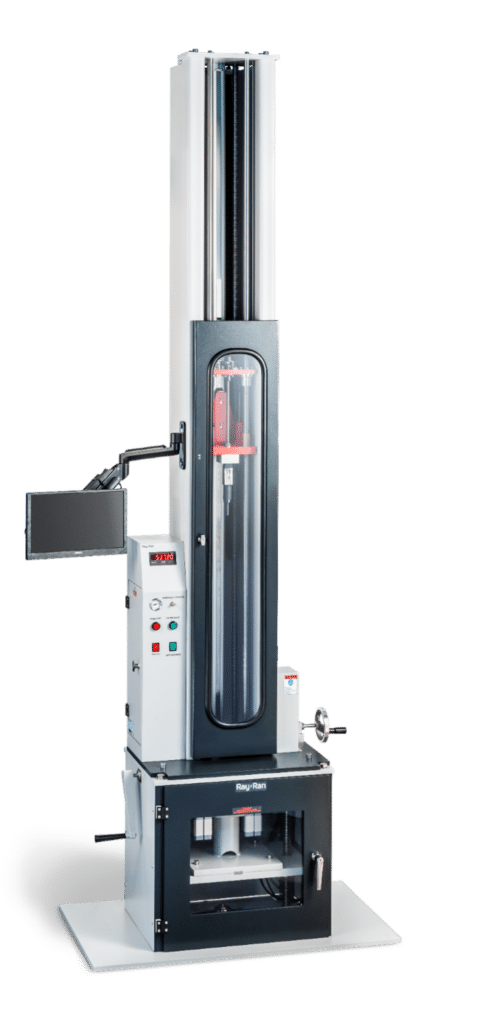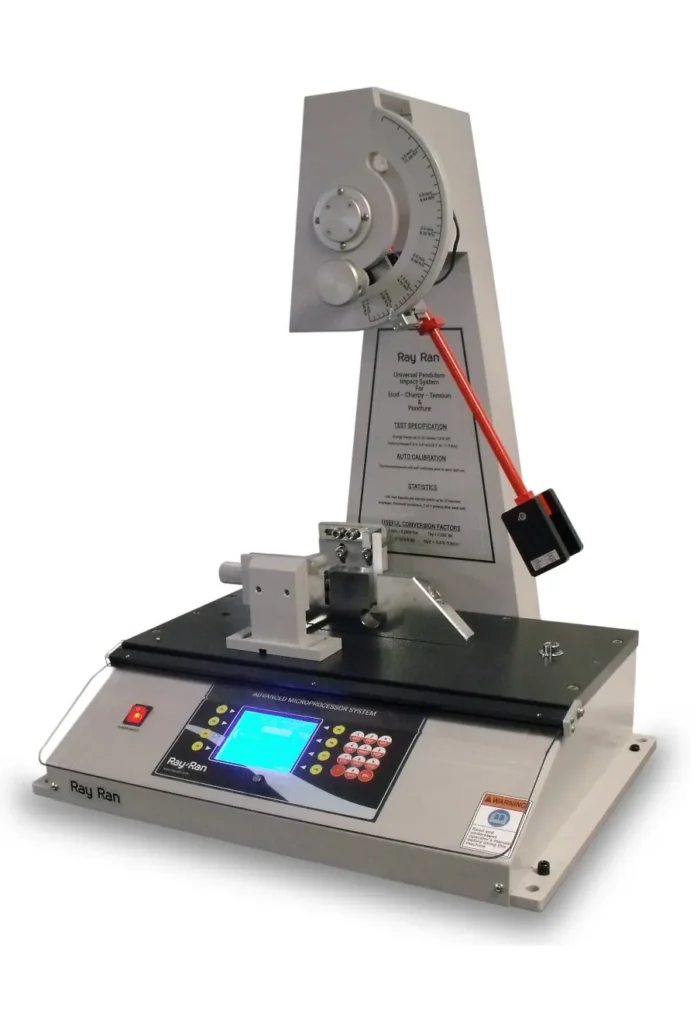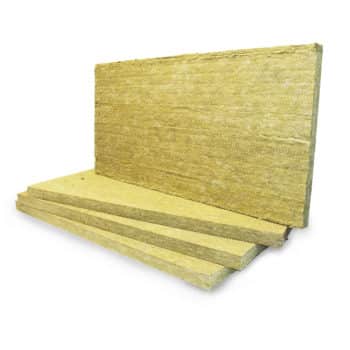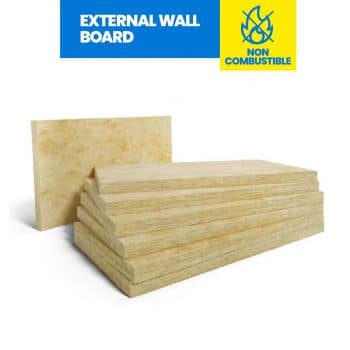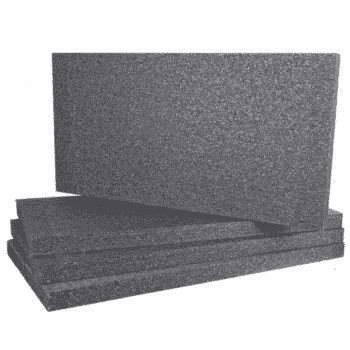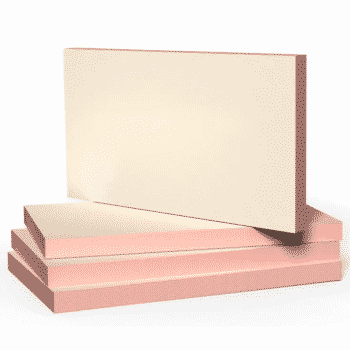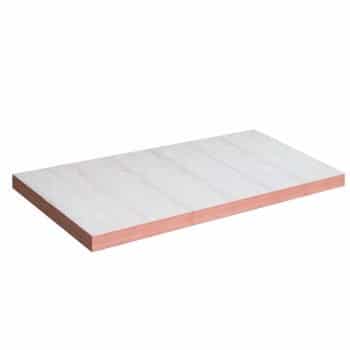4.8 out of 5 Stars on TrustPilot
Why is Impact Resistance Crucial in EWI Systems?
When it comes to External Wall Insulation (EWI) systems, there’s a significant characteristic that often goes unnoticed, yet it plays a crucial role in ensuring the system’s longevity, aesthetics, weather resistance, and thermal performance. This important characteristic is impact resistance. If your EWI system has increased impact resistance, the whole system is more durable. As such, it is more likely to satisfy the timeframes of any warranties.
What is impact resistance?
Impact resistance is the ability of a material or system to resist the effects of sudden force or shock. In the context of EWI systems, impact resistance refers to how well the insulation, render, and other components can withstand physical impacts without damage. This includes anything from a stray football hitting the wall to harsh weather conditions, or even small accidental bumps from day-to-day activities.
Measuring and testing
The measurement and testing of impact resistance are highly specialised processes. The tests are conducted in a manner that simulates real-world scenarios to yield accurate and reliable results. Different standards and procedures are followed globally. However, the European technical approval guideline, ETAG 004, is widely adopted due to its comprehensive and practical approach.
The ETAG 004 guideline recommends a specific procedure for the impact resistance test of External Thermal Insulation Composite Systems (ETICS), also known as EWI systems. It outlines a controlled method of testing by using a falling-weight impactor.
The Falling Weight Impact Test
This test involves dropping a 1kg weight onto the EWI system sample from varying heights to simulate different levels of impact energy. The weight is therefore designed to mimic real-world impacts. Additionally, the height from which it is dropped represents the intensity of the force.
- Preparation of the sample – A sample of the EWI system is prepared, including all its layers from the insulation material to the external render or cladding. The sample should represent the actual system used in field conditions.
- The test – The sample is then subjected to the falling weight impactor test. The weight, often a spherical or cylindrical object, is dropped from different heights, starting from a lower height and gradually increasing.
- Assessment of damage – After each drop, the sample is inspected for damage. The damage is classified into categories, such as no visible damage, minor cracks, major cracks, or penetration.
- Classification of impact resistance – The maximum height from which the weight is dropped without causing significant damage (usually defined as no penetration) is noted. The impact resistance is then classified into five categories (from I to V) according to ETAG 004. Category I indicates the highest impact resistance.
Other testing methods
While the falling weight impactor test is standard, other methods can also be used based on the specific requirements or conditions that the EWI system might face. For instance, the pendulum impact test is another common method used to measure impact resistance. This involves swinging a pendulum with a certain weight at the end to strike the sample. The energy absorbed by the sample upon impact is then measured to assess its impact resistance.
It’s crucial to note that impact resistance testing should be carried out in a controlled environment. These results form an essential part of the information used by architects, engineers, and builders when selecting the right EWI system for a particular application.
-
Falling Weight Impact Tester -
Pendulum Impact Tester
Source: https://industrialphysics.com/
EWI system components and their impact resistance
Impact resistance is enhanced by combining all the components of an EWI system. Each one has inherent resistance to mechanical compression, with varying levels of compressive strength. Some components are specifically developed to have a higher compressive strength. For example, Kingspan K5 insulation boards have a compressive strength of 120kPa. As such, they are ideal for areas more susceptible to incidental or accidental impact, such as roadside properties or urban developments.
Insulation – Materials like EPS or Mineral Wool are commonly used due to their excellent thermal performance and reasonable impact resistance. The thickness and density of the insulation can affect its impact resistance. As aforementioned, Kingspan K5 is the premier option when it comes to impact resistance and compressive strength.
| Insulation type | Compressive strength |
| Kingspan K5 | 120kPa |
| Mineral Wool | ≥60kPa |
| EPS | 70kPa |
-
Rockwool External Wall Dual Density Slab
Rated 5.00 out of 5From £25.19 Incl. VATFrom £20.99 Excl. VAT -
EPS Insulation (1 board = 0.72m²)
Rated 5.00 out of 5From £2.60 Incl. VATFrom £2.17 Excl. VAT -
K5 Kingspan External Wall insulation Board (0.72m²)
Rated 4.67 out of 5From £11.99 Incl. VATFrom £9.99 Excl. VAT
Render or Cladding – The external face of the EWI system, which provides the first line of defence against impacts. Renders are usually a mix of cement, sand, and lime. Cladding, on the other hand, can be made from various materials like timber, metal, or PVC. Both options can provide additional impact resistance, with their performance varying based on their composition and thickness.
Fibreglass Reinforcing Mesh – This is applied within the basecoat render layer and significantly improves the impact resistance of the system. The mesh works to distribute the force of an impact across a wider area, reducing the likelihood of localised damage.
Fixings – These are used to mechanically secure the insulation to the substrate. While not directly contributing to impact resistance, proper use of fixings ensures the stability of the system, preventing dislodging under impact.
Why do you need impact resistance in EWI systems?
As the external layer protecting your home, EWI and ETICS systems are susceptible to various forms of impact and damage. If they are more durable, they can also protect your home for longer.
Buildings must endure a host of environmental and human-induced impacts. These range from hailstones and wind-borne debris to inadvertent knocks from moving vehicles, and furniture. Therefore, an EWI system with high impact resistance is equipped to withstand such challenges, ensuring physical durability.
The long-term implications of high-impact resistance extend beyond just durability. Materials that resist impact effectively tend to last longer, showing resistance to daily wear and tear. This longevity means that the building stays insulated for extended periods, reducing the frequency of maintenance or replacement and thereby curtailing associated costs.
Aesthetics also come into play. An EWI system susceptible to damage may result in visible dents or cracks on the exterior of a building, which compromises its aesthetic appeal. High resistance to impact helps maintain the visual integrity of the building’s facade.
Moreover, impact resistance is often coupled with increased resistance to weather elements. EWI systems demonstrating high impact resistance can typically withstand harsh weather conditions such as heavy rain, snow, and freeze-thaw cycles, further enhancing their durability.

Finally, the thermal performance of an EWI system is directly influenced by its impact resistance. Damage to the insulation layer can lead to the formation of thermal bridges – zones where heat transfer between the building’s interior and exterior is more efficient. This can compromise the insulation’s effectiveness, leading to increased energy consumption for heating or cooling the building. By resisting impacts, the EWI system prevents the formation of these thermal bridges, maintaining its thermal performance and energy efficiency.
Facebook
Twitter
LinkedIn
Your cart
Trade Account Login

We use cookies on our website to give you the most relevant experience by remembering your preferences and repeat visits. By clicking “Accept All”, you consent to the use of ALL the cookies. However, you may visit "Cookie Settings" to provide personalised consent.
Manage consent
Privacy Overview
This website uses cookies to improve your experience while you navigate through the website. Out of these, the cookies that are categorized as necessary are stored on your browser as they are essential for the working of basic functionalities of the website. We also use third-party cookies that help us analyze and understand how you use this website. These cookies will be stored in your browser only with your consent. You also have the option to opt-out of these cookies. But opting out of some of these cookies may affect your browsing experience.
Necessary cookies are absolutely essential for the website to function properly. These cookies ensure basic functionalities and security features of the website, anonymously.
| Cookie | Duration | Description |
|---|---|---|
| __stripe_mid | 1 year | This cookie is set by Stripe payment gateway. This cookie is used to enable payment on the website without storing any patment information on a server. |
| __stripe_sid | 30 minutes | This cookie is set by Stripe payment gateway. This cookie is used to enable payment on the website without storing any patment information on a server. |
| _GRECAPTCHA | 5 months 27 days | This cookie is set by the Google recaptcha service to identify bots to protect the website against malicious spam attacks. |
| apbct_cookies_test | session | CleanTalk sets this cookie to prevent spam on comments and forms and act as a complete anti-spam solution and firewall for the site. |
| apbct_page_hits | session | CleanTalk sets this cookie to prevent spam on comments and forms and act as a complete anti-spam solution and firewall for the site. |
| apbct_prev_referer | session | Functional cookie placed by CleanTalk Spam Protect to store referring IDs and prevent unauthorized spam from being sent from the website. |
| apbct_site_landing_ts | session | CleanTalk sets this cookie to prevent spam on comments and forms and act as a complete anti-spam solution and firewall for the site. |
| apbct_site_referer | 3 days | This cookie is placed by CleanTalk Spam Protect to prevent spam and to store the referrer page address which led the user to the website. |
| apbct_timestamp | session | CleanTalk sets this cookie to prevent spam on comments and forms and act as a complete anti-spam solution and firewall for the site. |
| apbct_urls | 3 days | This cookie is placed by CleanTalk Spam Protect to prevent spam and to store the addresses (urls) visited on the website. |
| AWSALBCORS | 7 days | This cookie is managed by Amazon Web Services and is used for load balancing. |
| cookielawinfo-checkbox-advertisement | 1 year | Set by the GDPR Cookie Consent plugin, this cookie is used to record the user consent for the cookies in the "Advertisement" category . |
| cookielawinfo-checkbox-analytics | 11 months | This cookie is set by GDPR Cookie Consent plugin. The cookie is used to store the user consent for the cookies in the category "Analytics". |
| cookielawinfo-checkbox-functional | 11 months | The cookie is set by GDPR cookie consent to record the user consent for the cookies in the category "Functional". |
| cookielawinfo-checkbox-necessary | 11 months | This cookie is set by GDPR Cookie Consent plugin. The cookies is used to store the user consent for the cookies in the category "Necessary". |
| cookielawinfo-checkbox-others | 11 months | This cookie is set by GDPR Cookie Consent plugin. The cookie is used to store the user consent for the cookies in the category "Other. |
| cookielawinfo-checkbox-performance | 11 months | This cookie is set by GDPR Cookie Consent plugin. The cookie is used to store the user consent for the cookies in the category "Performance". |
| ct_checkjs | session | CleanTalk–Used to prevent spam on our comments and forms and acts as a complete anti-spam solution and firewall for this site. |
| ct_fkp_timestamp | session | CleanTalk sets this cookie to prevent spam on the site's comments/forms, and to act as a complete anti-spam solution and firewall for the site. |
| ct_pointer_data | session | CleanTalk sets this cookie to prevent spam on the site's comments/forms, and to act as a complete anti-spam solution and firewall for the site. |
| ct_ps_timestamp | session | CleanTalk sets this cookie to prevent spam on the site's comments/forms, and to act as a complete anti-spam solution and firewall for the site. |
| ct_sfw_pass_key | 1 month | CleanTalk sets this cookie to prevent spam on comments and forms and act as a complete anti-spam solution and firewall for the site. |
| ct_timezone | session | CleanTalk–Used to prevent spam on our comments and forms and acts as a complete anti-spam solution and firewall for this site. |
| elementor | never | This cookie is used by the website's WordPress theme. It allows the website owner to implement or change the website's content in real-time. |
| viewed_cookie_policy | 11 months | The cookie is set by the GDPR Cookie Consent plugin and is used to store whether or not user has consented to the use of cookies. It does not store any personal data. |
Functional cookies help to perform certain functionalities like sharing the content of the website on social media platforms, collect feedbacks, and other third-party features.
| Cookie | Duration | Description |
|---|---|---|
| __zlcmid | 1 year | This cookie is used by Zendesk live chat and is used to store the live chat ID. |
| bcookie | 2 years | LinkedIn sets this cookie from LinkedIn share buttons and ad tags to recognize browser ID. |
| bscookie | 2 years | LinkedIn sets this cookie to store performed actions on the website. |
| lang | session | LinkedIn sets this cookie to remember a user's language setting. |
| lidc | 1 day | LinkedIn sets the lidc cookie to facilitate data center selection. |
| UserMatchHistory | 1 month | LinkedIn sets this cookie for LinkedIn Ads ID syncing. |
Performance cookies are used to understand and analyze the key performance indexes of the website which helps in delivering a better user experience for the visitors.
| Cookie | Duration | Description |
|---|---|---|
| __utma | 2 years | This cookie is set by Google Analytics and is used to distinguish users and sessions. The cookie is created when the JavaScript library executes and there are no existing __utma cookies. The cookie is updated every time data is sent to Google Analytics. |
| __utmb | 30 minutes | Google Analytics sets this cookie, to determine new sessions/visits. __utmb cookie is created when the JavaScript library executes and there are no existing __utma cookies. It is updated every time data is sent to Google Analytics. |
| __utmc | session | The cookie is set by Google Analytics and is deleted when the user closes the browser. It is used to enable interoperability with urchin.js, which is an older version of Google Analytics and is used in conjunction with the __utmb cookie to determine new sessions/visits. |
| __utmt | 10 minutes | Google Analytics sets this cookie to inhibit request rate. |
| __utmv | 2 years | The __utmv cookie is set on the user's device, to enable Google Analytics to classify the visitor. |
| __utmz | 6 months | Google Analytics sets this cookie to store the traffic source or campaign by which the visitor reached the site. |
| sib_cuid | 6 months | Purechat uses this cookie to send data to purechat.com, to connect visitors to the reservation team and track visitors to stay on portal. |
| SRM_B | 1 year 24 days | Used by Microsoft Advertising as a unique ID for visitors. |
Analytical cookies are used to understand how visitors interact with the website. These cookies help provide information on metrics the number of visitors, bounce rate, traffic source, etc.
| Cookie | Duration | Description |
|---|---|---|
| _ga | 2 years | The _ga cookie, installed by Google Analytics, calculates visitor, session and campaign data and also keeps track of site usage for the site's analytics report. The cookie stores information anonymously and assigns a randomly generated number to recognize unique visitors. |
| _gat_gtag_UA_61069204_2 | 1 minute | Set by Google to distinguish users. |
| _gat_UA-61069204-2 | 1 minute | A variation of the _gat cookie set by Google Analytics and Google Tag Manager to allow website owners to track visitor behaviour and measure site performance. The pattern element in the name contains the unique identity number of the account or website it relates to. |
| _gcl_au | 3 months | Provided by Google Tag Manager to experiment advertisement efficiency of websites using their services. |
| _gid | 1 day | Installed by Google Analytics, _gid cookie stores information on how visitors use a website, while also creating an analytics report of the website's performance. Some of the data that are collected include the number of visitors, their source, and the pages they visit anonymously. |
| _uetsid | 1 day | This cookies are used to collect analytical information about how visitors use the website. This information is used to compile report and improve site. |
| CONSENT | 2 years | YouTube sets this cookie via embedded youtube-videos and registers anonymous statistical data. |
Advertisement cookies are used to provide visitors with relevant ads and marketing campaigns. These cookies track visitors across websites and collect information to provide customized ads.
| Cookie | Duration | Description |
|---|---|---|
| _fbp | 3 months | This cookie is set by Facebook to display advertisements when either on Facebook or on a digital platform powered by Facebook advertising, after visiting the website. |
| ANONCHK | 10 minutes | The ANONCHK cookie, set by Bing, is used to store a user's session ID and also verify the clicks from ads on the Bing search engine. The cookie helps in reporting and personalization as well. |
| fr | 3 months | Facebook sets this cookie to show relevant advertisements to users by tracking user behaviour across the web, on sites that have Facebook pixel or Facebook social plugin. |
| MUID | 1 year 24 days | Bing sets this cookie to recognize unique web browsers visiting Microsoft sites. This cookie is used for advertising, site analytics, and other operations. |
| NID | 6 months | NID cookie, set by Google, is used for advertising purposes; to limit the number of times the user sees an ad, to mute unwanted ads, and to measure the effectiveness of ads. |
| test_cookie | 15 minutes | The test_cookie is set by doubleclick.net and is used to determine if the user's browser supports cookies. |
| uuid | 6 months | MediaMath sets this cookie to avoid the same ads from being shown repeatedly and for relevant advertising. |
| VISITOR_INFO1_LIVE | 5 months 27 days | A cookie set by YouTube to measure bandwidth that determines whether the user gets the new or old player interface. |
| YSC | session | YSC cookie is set by Youtube and is used to track the views of embedded videos on Youtube pages. |
| yt-remote-connected-devices | never | YouTube sets this cookie to store the video preferences of the user using embedded YouTube video. |
| yt-remote-device-id | never | YouTube sets this cookie to store the video preferences of the user using embedded YouTube video. |
| yt.innertube::nextId | never | This cookie, set by YouTube, registers a unique ID to store data on what videos from YouTube the user has seen. |
| yt.innertube::requests | never | This cookie, set by YouTube, registers a unique ID to store data on what videos from YouTube the user has seen. |
Other uncategorized cookies are those that are being analyzed and have not been classified into a category as yet.
| Cookie | Duration | Description |
|---|---|---|
| _clck | 1 year | No description |
| _clsk | 1 day | No description |
| _uetvid | 1 year 24 days | No description available. |
| AnalyticsSyncHistory | 1 month | No description |
| apbct_pixel_url | session | No description |
| apbct_visible_fields_0 | session | No description |
| apbct_visible_fields_1 | session | No description |
| apbct_visible_fields_10 | session | No description |
| apbct_visible_fields_2 | session | No description |
| apbct_visible_fields_3 | session | No description |
| apbct_visible_fields_4 | session | No description |
| apbct_visible_fields_5 | session | No description |
| apbct_visible_fields_6 | session | No description |
| apbct_visible_fields_7 | session | No description |
| apbct_visible_fields_8 | session | No description |
| apbct_visible_fields_9 | session | No description |
| ct_checked_emails | session | No description |
| ct_has_scrolled | session | No description |
| ct_mouse_moved | session | No description |
| ct_screen_info | session | No description |
| ictf_master | never | No description available. |
| li_gc | 2 years | No description |
| m | 2 years | No description available. |
| SM | session | No description available. |
| testinfinitycookie | session | No description |
| woocommerce_show_tax | 7 days | No description available. |
| wp_woocommerce_session_c5ac76b408021294cb56bcc27eddf8a1 | 2 days | No description |


